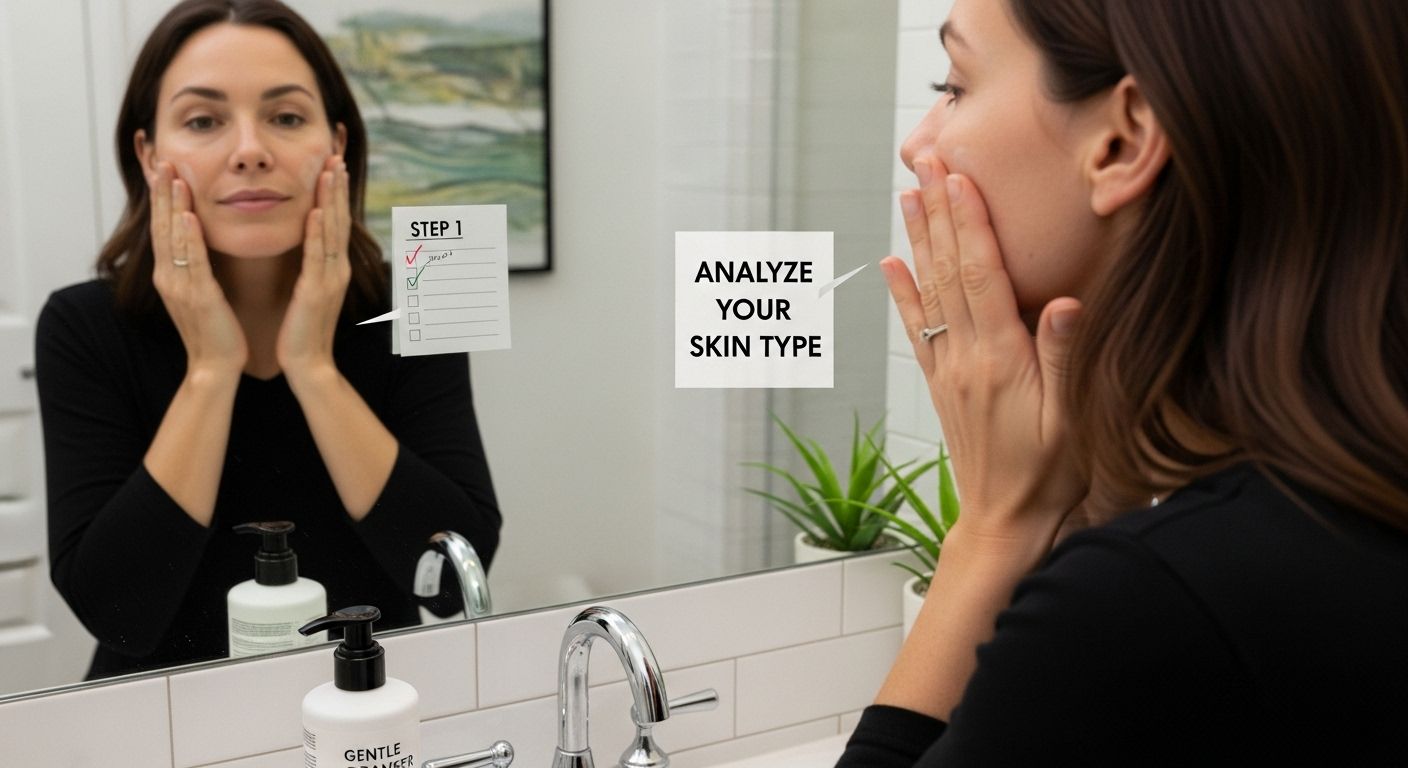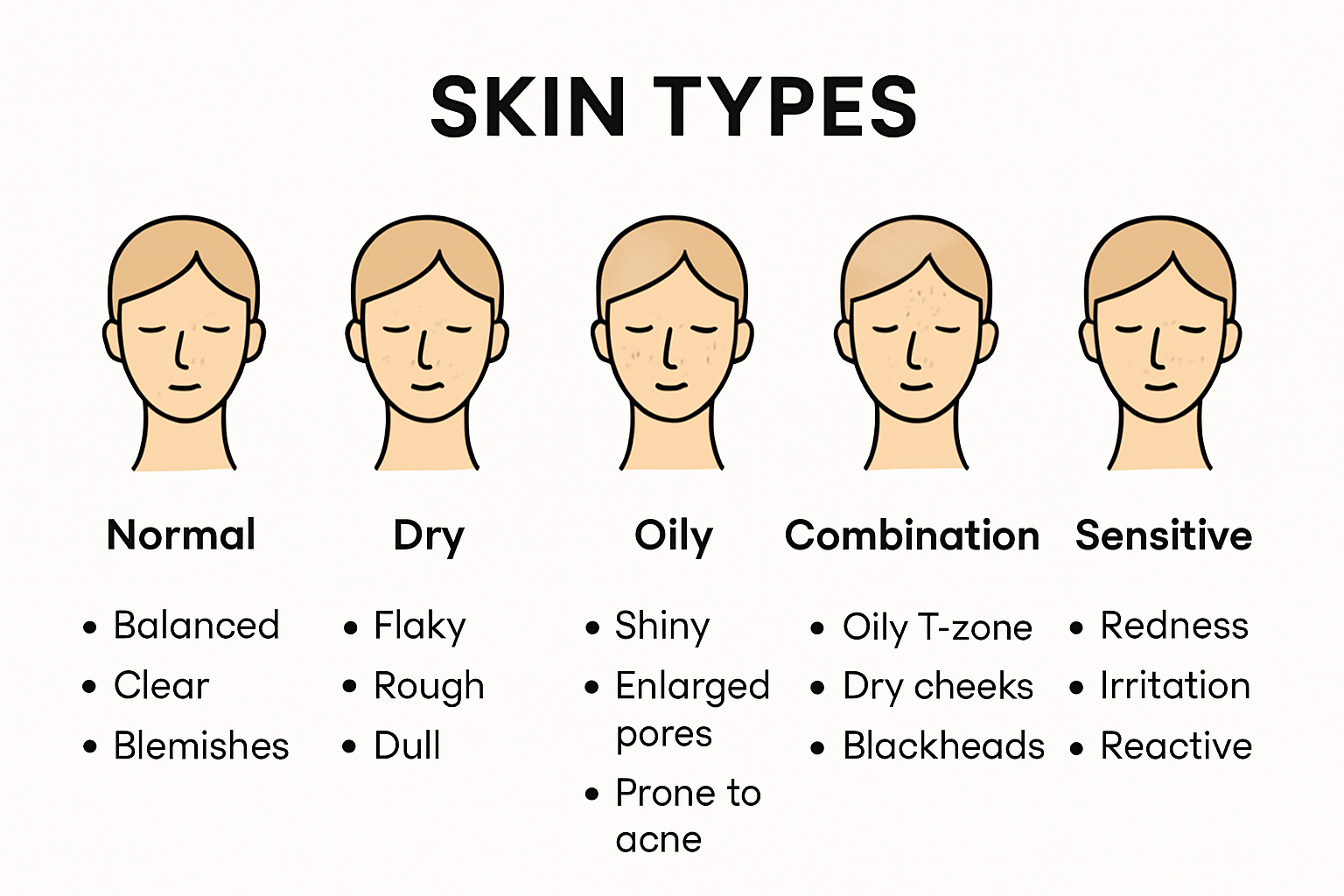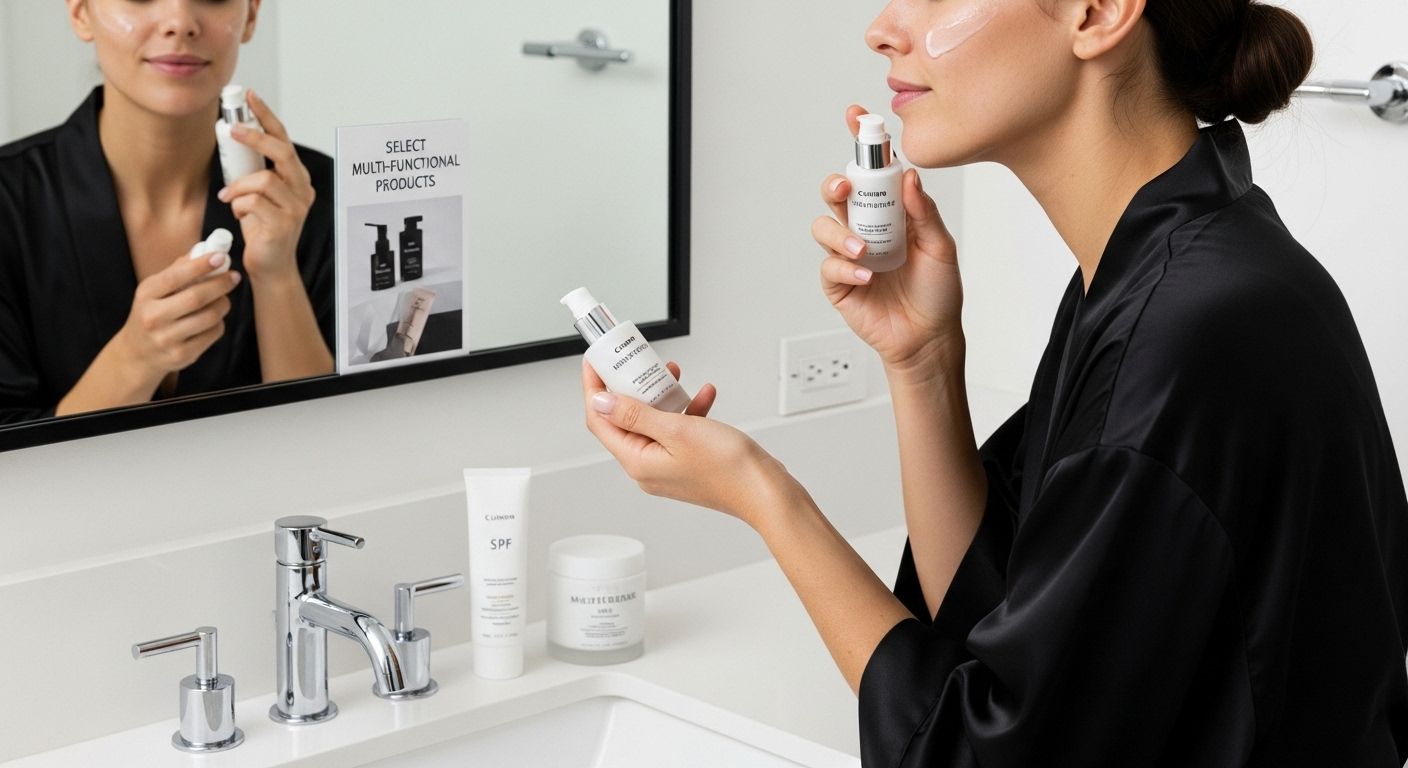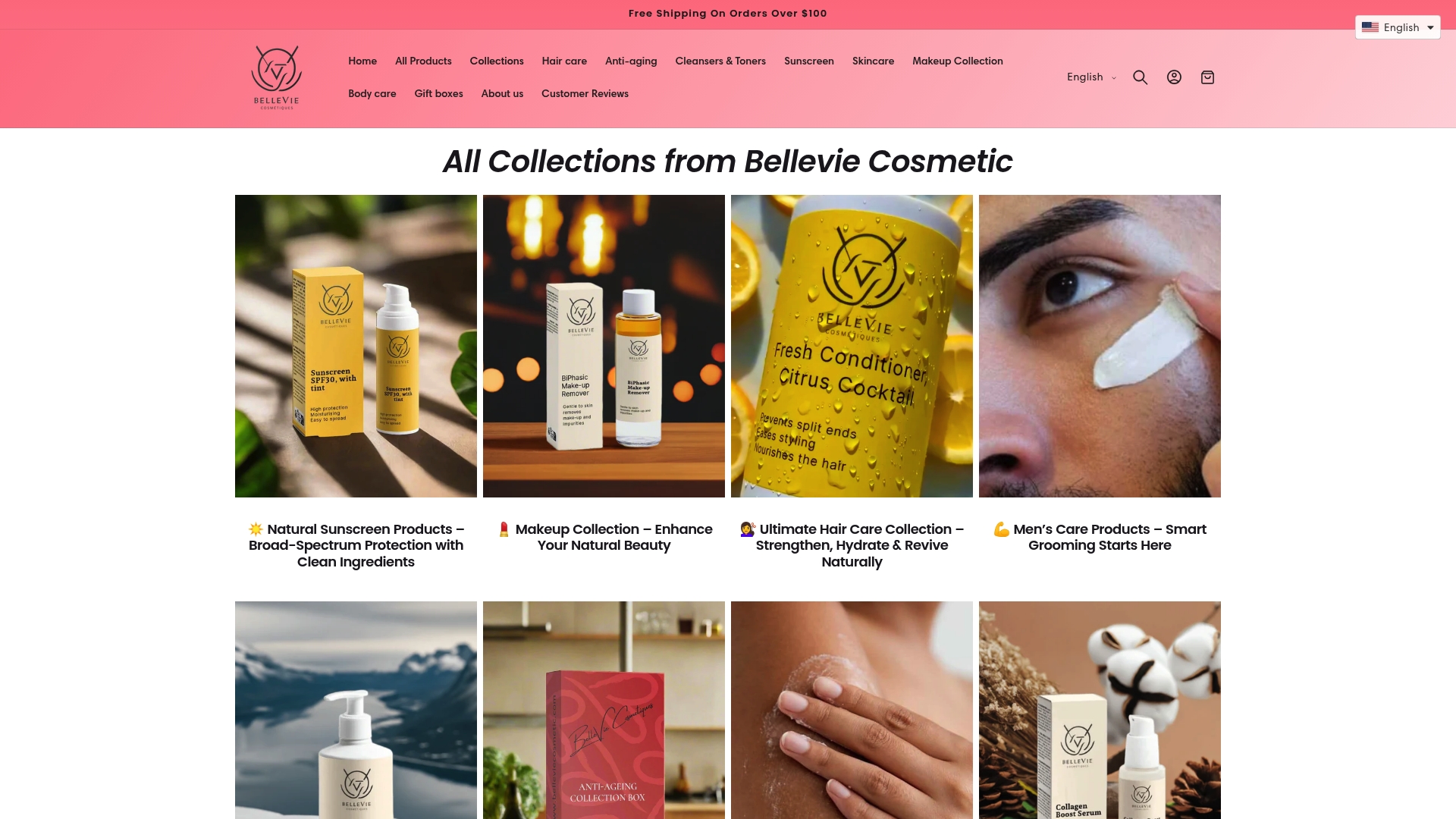Most people slap on their skincare products and hope for the best. Yet more than 60 percent admit they have no idea what their actual skin type even is. Surprising, right? But understanding your skin isn’t about guesswork or following the latest buzzy trend. It’s about using real strategies—like a simple at-home assessment—that turn random routines into results you can actually see and feel.

Table of Contents
- Step 1: Analyze Your Skin Type And Needs
- Step 2: Streamline Your Skincare Routine
- Step 3: Select Multi-Functional Products
- Step 4: Incorporate Active Ingredients Strategically
- Step 5: Monitor Progress And Adjust Accordingly
Quick Summary
| Key Point | Explanation |
|---|---|
| 1. Assess Your Skin Type | Understanding your skin type is vital to choose suitable products and prevent potential harm. |
| 2. Streamline Your Routine | Focus on a limited number of core products for effectiveness and simplicity, ensuring they serve distinct purposes. |
| 3. Use Multi-Functional Products | Look for products that combine benefits to reduce layering and save time while addressing multiple concerns. |
| 4. Incorporate Actives Strategically | Introduce one new active ingredient at a time, monitor skin reactions, and adjust based on compatibility. |
| 5. Regularly Monitor Progress | Keep a skin journal to track changes and make necessary adjustments based on your skin’s responses and needs. |
Step 1: Analyze Your Skin Type and Needs
Maximizing skincare efficiency begins with understanding your unique skin profile. Recognizing your specific skin type and concerns is the foundational step that determines the success of your entire skincare routine. Without this critical assessment, you risk using products that could potentially harm or fail to improve your skin’s condition.
To start your skin analysis, perform a simple at-home skin assessment. Begin by thoroughly cleansing your face with a gentle, pH-balanced cleanser. Pat your skin dry and wait approximately one hour without applying any products. During this time, observe how your skin feels and looks. Does it feel tight and uncomfortable? Appear shiny and greasy? Exhibit dry patches or sensitivity? These observations will help you determine your primary skin type.

Skin types generally fall into five primary categories: normal, dry, oily, combination, and sensitive. Normal skin appears balanced, with minimal shine and no significant sensitivities. Dry skin feels tight, might look flaky, and can be prone to fine lines. Oily skin presents with excess shine, enlarged pores, and potential acne tendencies. Combination skin displays characteristics of both dry and oily skin types, typically with an oily T-zone and drier cheek areas. Sensitive skin reacts quickly to products, often experiencing redness, burning, or irritation.
Beyond identifying your skin type, take time to assess specific skin concerns. Are you battling premature aging signs, struggling with persistent acne, experiencing uneven skin tone, or dealing with hyperpigmentation? Each concern requires a targeted approach. For instance, aging skin benefits from peptides and hyaluronic acid, while acne-prone skin needs salicylic acid and niacinamide.
To refine your analysis, consider creating a skin journal where you document daily observations, product reactions, and skin changes. Track environmental factors like humidity, stress levels, diet, and sleep, which significantly impact skin health. This systematic approach transforms your skincare routine from guesswork to a personalized, scientific strategy for achieving radiant, healthy skin.
Once you’ve completed your skin type and concern assessment, you’re ready to move forward with selecting targeted skincare products that will work harmoniously with your unique skin profile. Remember, knowledge is the first step toward skincare efficiency.
Step 2: Streamline Your Skincare Routine
Streamlining your skincare routine is about creating an efficient, targeted approach that maximizes results while minimizing complexity. After identifying your skin type and concerns, the next critical step is developing a focused regimen that works smarter, not harder. A well-designed routine reduces product redundancy, prevents potential ingredient conflicts, and helps your skin absorb active ingredients more effectively.
Begin by selecting core products that address your specific skin needs. Your essential lineup should typically include a gentle cleanser, targeted treatment serum, moisturizer, and sunscreen. Each product should serve a distinct purpose without overwhelming your skin. For instance, if you have combination skin with early aging signs, choose a lightweight hyaluronic acid serum, a non-comedogenic moisturizer, and a broad-spectrum SPF that provides hydration and protection.
The order of application matters significantly in maximizing skincare efficiency. Always apply products from thinnest to thickest consistency, allowing each layer to absorb completely before adding the next. Start with lightweight serums containing active ingredients like niacinamide or peptides, followed by moisturizers, and finish with sunscreen during daytime routines. This sequence ensures optimal ingredient penetration and reduces the likelihood of product pilling or reduced effectiveness.
Implement a strategic approach to active ingredients. Rather than using multiple potent actives simultaneously, which can cause irritation, rotate or alternate them. For example, use vitamin C in the morning for antioxidant protection and retinol or bakuchiol at night for cellular renewal. This method prevents overwhelming your skin while providing comprehensive treatment. Monitor how your skin responds and be prepared to adjust your routine based on seasonal changes, stress levels, or hormonal fluctuations.
To verify your routine’s effectiveness, pay attention to how your skin responds. Positive signs include balanced hydration, reduced sensitivity, improved texture, and a natural glow. Negative indicators like increased breakouts, redness, or persistent dryness suggest your current approach needs refinement. Remember that consistency is key - give new products and routines at least four to six weeks to demonstrate their full potential.
A streamlined skincare routine is not about using the most products, but about using the right products strategically. By focusing on quality over quantity, you’ll create a personalized regimen that respects your skin’s unique needs while simplifying your daily skincare experience.
Step 3: Select Multi-Functional Products
Multi-functional skincare products represent the pinnacle of efficiency in modern beauty routines. These powerhouse formulations combine multiple active ingredients and benefits into single, streamlined solutions that save time, reduce product layering, and maximize skincare effectiveness. By strategically selecting products that address several skin concerns simultaneously, you dramatically simplify your routine while delivering comprehensive skin nutrition.
Ingredient synergy becomes the cornerstone of an efficient skincare approach. Look for products containing complementary active ingredients that work together to amplify results. For instance, a moisturizer with niacinamide, hyaluronic acid, and peptides can simultaneously hydrate, reduce inflammation, boost collagen production, and minimize fine lines. These intelligent formulations eliminate the need for multiple separate products, reducing both complexity and potential ingredient interactions.
When evaluating multi-functional products, prioritize targeted performance over marketing claims. Examine ingredient lists carefully, focusing on scientifically validated compounds that address your specific skin concerns. Seek out products with proven actives like bakuchiol for anti-aging, ceramides for barrier repair, or prebiotics for microbiome balance. A single serum containing multiple complementary ingredients can replace several standalone products, streamlining your routine without compromising efficacy.

Consider your lifestyle and skin goals when selecting multi-functional products. A daytime moisturizer with built-in SPF protection offers sun defense and hydration in one step. An evening treatment combining retinol, antioxidants, and skin-soothing botanicals can simultaneously address aging, environmental damage, and potential irritation. These strategic choices transform your skincare from a time-consuming ritual to an efficient, results-driven practice.
To verify the effectiveness of your multi-functional products, monitor your skin’s response over four to six weeks. Positive indicators include improved skin texture, balanced hydration, reduced sensitivity, and a more uniform complexion. Pay attention to how your skin feels throughout the day – a truly effective multi-functional product should provide consistent performance without requiring frequent reapplication or causing midday shine or dryness.
Remember that multi-functional does not mean one-size-fits-all. Your unique skin type and concerns demand personalized solutions. Experiment thoughtfully, introduce new products gradually, and be willing to adjust your approach. By embracing multi-functional skincare, you’re not just simplifying your routine – you’re adopting a smarter, more sophisticated approach to skin health that respects both your time and your skin’s complex needs.
Step 4: Incorporate Active Ingredients Strategically
Strategically incorporating active ingredients transforms skincare from a passive routine into a targeted, results-driven approach. Active ingredients are powerful compounds that directly address specific skin concerns, delivering transformative benefits when applied with precision and understanding. The key lies not just in selecting potent ingredients, but in implementing them thoughtfully to maximize efficacy while minimizing potential irritation.
Layering active ingredients requires a methodical approach. Start by introducing one new active ingredient at a time, allowing your skin a minimum of two weeks to acclimate before adding another. This strategy helps you identify how your skin responds to specific compounds and prevents overwhelming your skin’s delicate balance. For instance, if you’re introducing retinol, begin with a low concentration, applying it twice weekly and gradually increasing frequency as your skin develops tolerance.
Understand the optimal timing and compatibility of active ingredients. Some compounds work synergistically, while others can neutralize or irritate each other when combined incorrectly. Vitamin C performs best in morning routines, providing antioxidant protection, while retinol and AHAs are more effectively used during evening skincare. Pair complementary ingredients like niacinamide with hyaluronic acid for enhanced hydration, or combine peptides with ceramides to support skin barrier function and promote collagen production.
Pay close attention to concentration and formulation. Higher percentages do not always equate to better results. A well-formulated product with strategic ingredient concentrations can be more effective than an aggressive, high-percentage serum that potentially damages your skin barrier. Look for products that balance potent actives with soothing, supportive ingredients like panthenol, allantoin, or botanical extracts that mitigate potential irritation.
To verify the effectiveness of your active ingredient strategy, monitor your skin’s response carefully. Positive indicators include improved skin texture, reduced fine lines, more even skin tone, and a healthy, radiant complexion. Negative signs such as persistent redness, increased sensitivity, or breakouts suggest your current approach needs adjustment. Remember that skin adaptation is a gradual process – patience and consistent, gentle application are crucial.
Ultimately, strategic active ingredient incorporation is an art and a science. It requires understanding your skin’s unique needs, respecting its natural rhythms, and approaching skincare as a personalized journey of continuous learning and refinement. By implementing active ingredients with intention and care, you transform your skincare routine from a generic process into a sophisticated, targeted approach to skin health.
Step 5: Monitor Progress and Adjust Accordingly
Monitoring your skincare progress is a dynamic, ongoing process that transforms your routine from a static regimen to an adaptive, responsive strategy. Successful skincare isn’t about rigidly following a predetermined plan, but about developing a keen understanding of how your skin evolves and responds to different treatments, environmental factors, and lifestyle changes.
Documentation becomes your most powerful tool in tracking skincare transformation. Create a comprehensive skin journal that goes beyond simple product notes. Photograph your skin under consistent lighting every two weeks, documenting texture, tone, and any visible concerns. Record environmental factors like stress levels, diet, sleep patterns, and hormonal cycles, which significantly impact skin health. Note specific changes in skin hydration, breakout frequency, sensitivity, and overall appearance. This holistic approach provides a nuanced understanding of your skin’s complex interactions with products and external influences.
Establish clear, measurable progress indicators that extend beyond surface-level observations. Look for substantive improvements such as reduced inflammation, more uniform skin tone, decreased hyperpigmentation, improved skin barrier function, and enhanced natural radiance. Pay attention to subtle changes in skin texture, moisture retention, and resilience. Quantify your observations by tracking specific metrics: skin hydration levels, reduction in fine lines, evenness of skin tone, and decreased sensitivity.
Remember that skin adaptation is a gradual process. Most significant transformations occur between four to twelve weeks of consistent product use. Resist the impulse to immediately abandon a routine if immediate results aren’t apparent. However, remain vigilant for signs of potential product incompatibility, such as persistent redness, increased breakouts, excessive dryness, or unusual skin sensitivity. These signals indicate the need for immediate routine adjustment.
Develop a flexible mindset toward skincare modification. Seasonal changes, hormonal shifts, stress, and aging necessitate routine updates. What works brilliantly during summer might prove too heavy in winter. A product that addressed your concerns six months ago might no longer be optimal. Periodic reassessment is not failure, but a sophisticated approach to personalized skincare.
To successfully monitor and adjust your skincare routine, cultivate patience and scientific curiosity. Treat your skin as a dynamic, responsive ecosystem that requires consistent, thoughtful care. By approaching skincare as an evolving journey of discovery, you transform routine maintenance into a nuanced, personalized path toward sustained skin health and radiance. Your skin tells a story – learn to listen, observe, and respond with intention.
Streamline Your Skincare Journey with BelleVie
Searching for skincare that truly matches your unique skin profile? You have just learned how understanding your skin type and choosing multi-functional, actives-focused products can help you achieve radiant, efficient results. BelleVie Cosmetic puts those principles into practice with natural, clinically proven solutions for every concern, from gentle cleansers to targeted anti-aging serums. If you want to simplify your routine and experience real improvements, our curated collections are designed for both clarity and visible transformation.

Why wait to see the difference? Explore BelleVie’s anti-aging skincare and peptide serums to target fine lines and boost hydration, or discover glow-essentials and our award-winning SPF50 mineral sunscreen. Each formula is crafted for efficiency and purity, so you can follow the personalized approach outlined in your routine. Start now at BelleVieCosmetic.com and see how clean beauty meets real results.
Frequently Asked Questions
How can I determine my skin type?
You can determine your skin type by conducting an at-home skin assessment. Cleanse your face, wait for an hour without applying any products, and observe your skin’s characteristics. Look for signs of tightness (dry), oiliness (oily), a combination of both (combination), sensitivity, or a balanced feel (normal).
What are the essential products for an effective skincare routine?
An effective skincare routine typically includes a gentle cleanser, a targeted treatment serum, a moisturizer, and sunscreen. Each product should address your specific skin needs without overwhelming your skin.
How should I layer active ingredients in my skincare routine?
Layer active ingredients from thinnest to thickest consistency. Start with lightweight serums, followed by moisturizers, and finish with sunscreen during the day. Introduce one new active ingredient at a time, allowing your skin to adjust before adding more.
Why is it important to monitor my skin’s response to products?
Monitoring your skin’s response helps identify how well products work for your specific needs. Look for signs of improvement, such as reduced sensitivity or improved texture, and be prepared to adjust your routine if you experience irritation or adverse reactions.
💬 Want to get the most out of your skincare routine?
Chat directly with our AI Skincare Advisor on Instagram and receive personalized tips to maximize your results for radiant, glowing skin.
👉 Start Chat Now on Instagram AI
Recommended
- Top 5 Proven Skincare Ingredients Backed by Science (And Products That Actually Work) – BelleVie Cosmétiques
- Top 5 Proven Skincare Ingredients Backed by Science (And Products That Actually Work) – BelleVie Cosmétiques
- Top 5 Gesichtsöle für strahlende Haut 2025 | BelleVie Naturkosmetik – BelleVie Cosmétiques
- Top 5 Proven Skincare Ingredients Backed by Science (And Products That Actually Work) – BelleVie Cosmétiques
